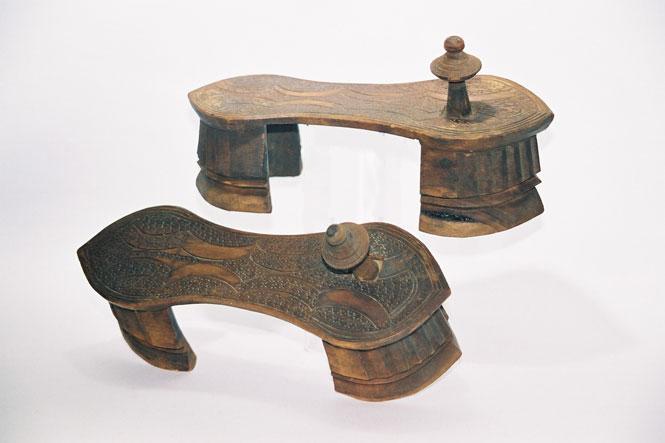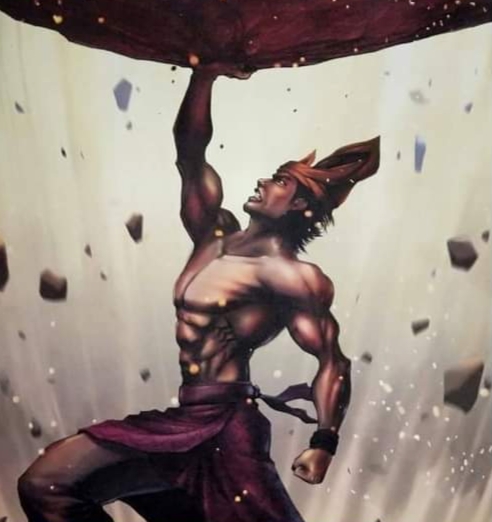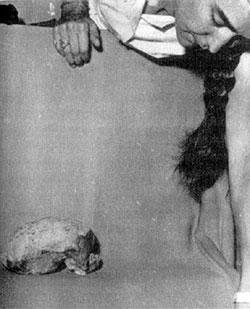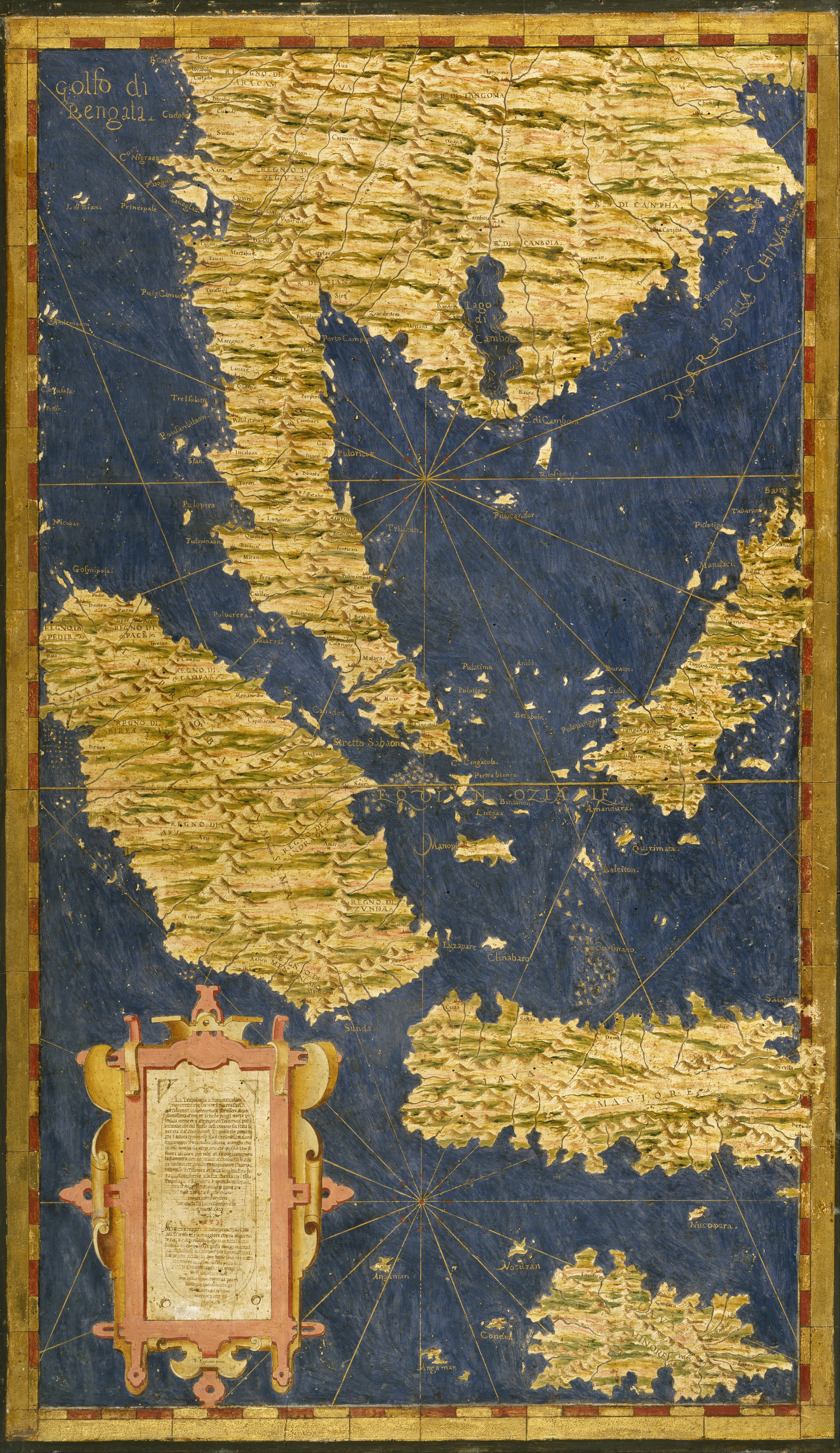|
Sri Rana Wikrama
Paduka Sri Rana Wikrama ('Ranavikrama') was the eldest son of Sri Wikrama Wira with his wife Nila Panjadi, and the third Raja of Kingdom of Singapura, Singapura. He was known as ''Raja Muda'' his accession and married to a daughter of Bendahara Tun Perpatih Muka Berjajar. His reign was from 1362 to 1375. Despite the failure in the previous campaign against Singapura under the rule of his father, the Javanese chronicle ''Nagarakretagama'' list Singapura as a subject of Majapahit in 1365. During his reign, Rana Wira Kerma established a diplomatic ties with a Sumatran Muslim kingdom, Peureulak. It was during this time also, a legendary man with an unusual strength, Badang, was said to have demonstrated his feat of strength in Rana Wikrama's court. References Rajas of Singapore 14th-century monarchs in Asia Hindu monarchs Malaysian Hindus History of Malaysia History of Singapore 1375 deaths {{Asia-royal-stub ... [...More Info...] [...Related Items...] OR: [Wikipedia] [Google] [Baidu] |
Paduka
''Paduka'' is an ancient form of footwear in India, consisting of a sole with a post and knob which is positioned between the big and second toe. It has been historically worn in South Asia and Southeast Asia. ''Paduka'' exist in a variety of forms and materials. They might be made in the shape of actual feet, or of fish, for example, and have been made of wood, ivory and silver. They may be elaborately decorated, such as when used as part of a bride's trousseau, but could also be given as religious offerings or themselves be the object of veneration. Although simple wooden ''padukas'' could be worn by common people, ''padukas'' of fine teak, ebony and sandalwood, inlaid with ivory or wire, were a mark of the wearer's high status. In the modern world, ''padukas'' are worn as footwear by mendicants and saints of Hinduism, Buddhism,and Jainism. Its significance in Hinduism is linked to the epic ''Ramayana''. ''Paduka'' can also refer to the footprints of deities and saints that ar ... [...More Info...] [...Related Items...] OR: [Wikipedia] [Google] [Baidu] |
Badang Lifting The Singapore Stone At National Day Parade 2016
Badang was a legendary Southeast Asian strongman from the Malay world. He is from Sungai Batu Pahat, Johor. He was active in the court of the Raja Sri Rana Wikrama of the Kingdom of Singapura. He was associated with several geographical locations and historical artefacts, most notably the Singapore Stone. Source The written record of the legend of Si Badang is found in the Malay Annals, an important collection of oral folklore from the Malay World. Variations of the legend of Badang exist due to the oral nature of its transmission, and its popular use in children's literature. Mythology Badang was a Malay boy from Batu Pahat River, Johore, Malaysia. He was the only son of two poor farmers who worked hard until the day they died. As a young man, Badang worked as a coolie for the rich farmer Orang Kaya Nira Sura in a place called Salung or Saluang in Aceh, Sumatra (modern-day Indonesia). Badang was small-statured and the weakest of his group. Their job was to clear through the u ... [...More Info...] [...Related Items...] OR: [Wikipedia] [Google] [Baidu] |
History Of Malaysia
Malaysia is located on a strategic sea lane that exposes it to global trade and various cultures. The name "Malaysia" is a modern concept, created in the second half of the 20th century. However, contemporary Malaysia regards the entire history of Malaya and Borneo, spanning thousands of years back to prehistoric times, as its own history. An early western account of the area is seen in Ptolemy's book ''Geographia'', which mentions a " Golden Khersonese," now identified as the Malay Peninsula. Hinduism and Buddhism from India and China dominated early regional history, reaching their peak during the reign of the Palembang, Sumatra, Indonesia - based Srivijaya civilisation, whose influence extended through Sumatra, West Java, East Borneo and the Malay Peninsula from the 7th to the 13th centuries. Although Muslims passed through the Malay Peninsula as early as the 10th century, it was not until the 14th century that Islam first firmly established itself. The adoption of Islam in ... [...More Info...] [...Related Items...] OR: [Wikipedia] [Google] [Baidu] |
Malaysian Hindus
Hinduism is the fourth largest religion in Malaysia. About 1.78 million Malaysian residents (6.3% of the total population) are Hindus, according to 2010 Census of Malaysia. This is up from 1,380,400 (6.2% of the total population) in 2000. Most Malaysian Hindus are settled in western parts of Peninsular Malaysia. There are 3 states in Malaysia that qualify to be a Hindu enclave, where the Hindu percentage is greater than 10% of the population. The Malaysian state with highest percentage of Hindus, according to 2010 Census, is Negeri Sembilan (13.4%), followed by Selangor (11.6%), Perak (10.9%) and Federal Territory of Kuala Lumpur (8.5%). The first three mentioned technically count as being Hindu enclaves. The state with the least percentage of Hindu population is Sabah (0.1%). Indians, along with other ethnic groups such as Chinese, began arriving in Malaysia in the ancient and medieval era. In 2010, Malaysian Census reported there were 1.91 million citizens of Indian ethnic or ... [...More Info...] [...Related Items...] OR: [Wikipedia] [Google] [Baidu] |
Hindu Monarchs
Hindus (; ) are people who religiously adhere to Hinduism.Jeffery D. Long (2007), A Vision for Hinduism, IB Tauris, , pages 35–37 Historically, the term has also been used as a geographical, cultural, and later religious identifier for people living in the Indian subcontinent. The term ''"Hindu"'' traces back to Old Persian which derived these names from the Sanskrit name ''Sindhu'' (सिन्धु ), referring to the river Indus. The Greek cognates of the same terms are "''Indus''" (for the river) and "''India''" (for the land of the river). The term "''Hindu''" also implied a geographic, ethnic or cultural identifier for people living in the Indian subcontinent around or beyond the Sindhu (Indus) River. By the 16th century CE, the term began to refer to residents of the subcontinent who were not Turkic or Muslims. Hindoo is an archaic spelling variant, whose use today is considered derogatory. The historical development of Hindu self-identity within the local In ... [...More Info...] [...Related Items...] OR: [Wikipedia] [Google] [Baidu] |
14th-century Monarchs In Asia
As a means of recording the passage of time, the 14th century was a century lasting from 1 January 1301 ( MCCCI), to 31 December 1400 ( MCD). It is estimated that the century witnessed the death of more than 45 million lives from political and natural disasters in both Europe and the Mongol Empire. West Africa experienced economic growth and prosperity. In Europe, the Black Death claimed 25 million lives wiping out one third of the European population while the Kingdom of England and the Kingdom of France fought in the protracted Hundred Years' War after the death of Charles IV, King of France led to a claim to the French throne by Edward III, King of England. This period is considered the height of chivalry and marks the beginning of strong separate identities for both England and France as well as the foundation of the Italian Renaissance and Ottoman Empire. In Asia, Tamerlane (Timur), established the Timurid Empire, history's third largest empire to have been ever establish ... [...More Info...] [...Related Items...] OR: [Wikipedia] [Google] [Baidu] |
Rajas Of Singapore
Rajas (Sanskrit: रजस्) is one of the three Guṇas (tendencies, qualities, attributes), a philosophical and psychological concept developed by the Samkhya school of Hindu philosophy.James G. Lochtefeld, Rajas, in The Illustrated Encyclopedia of Hinduism: A-M, Vol. 2, Rosen Publishing, , pages 546-547 The other two qualities are ''Sattva'' (goodness, balance) and '' Tamas'' (lethargy, violence, disorder). ''Rajas'' is innate tendency or quality that drives motion, energy and activity.Ian Whicher (1998), ''The Integrity of the Yoga Darśana'', State University of New York Press, pages 86-87, 124-125, 163-167, 238-243 ''Rajas'' is sometimes translated as passion, where it is used in the sense of activity, without any particular value and it can contextually be either good or bad. Rajas helps actualize the other two gunas. Description In Samkhya philosophy, a is one of three "tendencies, qualities": sattva, rajas and tamas. This category of qualities have been widely adopted ... [...More Info...] [...Related Items...] OR: [Wikipedia] [Google] [Baidu] |
Raja Of Singapura
The Kingdom of Singapura (Malay: ''Kerajaan Singapura'') was an Indianised Malay Hindu-Buddhist kingdom thought to have been established during the early history of Singapore upon its main island Pulau Ujong, then also known as Temasek, from 1299 until its fall in 1398. Conventional view marks as the founding year of the kingdom by Sang Nila Utama (also known as "Sri Tri Buana"), whose father is Sang Sapurba, a semi-divine figure who according to legend is the ancestor of several Malay monarchs in the Malay World. The historicity of this kingdom based on the account given in the ''Malay Annals'' is uncertain, and many historians only consider its last ruler Parameswara (king), Parameswara (or Sri Iskandar Shah) a historically attested figure. Archaeological evidence from Fort Canning Hill and the nearby banks of the Singapore River has nevertheless demonstrated the existence of a thriving settlement and a trade port in the 14th century. The settlement developed in the 13th ... [...More Info...] [...Related Items...] OR: [Wikipedia] [Google] [Baidu] |
Sang Sapurba
Sri Maharaja Sang Sapurba Paduka Sri Trimurti Tri Buana, (1245–1316) also known as Sri Nila Pahlawan, is a figure in the Malay Annals, highly revered as the legendary great ancestor of some of the major dynasties of the Malay world: Singapura, Malacca, Pahang, Johor, Perak, Kelantan, Terengganu and Siak Sri Indrapura. Legend has it that after his accession to Seguntang Hill with his two younger brothers, Sang Sapurba enters into a sacred covenant with Demang Lebar Daun the native ruler of Palembang, which laid the basis of the proper relationship between the Malay rulers and the subjects. The legendary sword believed to be carried by the king, the '' Cura Si Manjakini'', is now formed part of the regalia of Perak Sultanate, whose rulers are said directly descended from the king. The details of Sang Sapurba stories are mainly composed of folklore and legends, and thus his historical existence is debated and disputed by modern historians. Even so, as De Jong argued in her article ''T ... [...More Info...] [...Related Items...] OR: [Wikipedia] [Google] [Baidu] |
Badang
Badang was a legendary Southeast Asian strongman from the Malay world. He is from Sungai Batu Pahat, Johor. He was active in the court of the Raja Sri Rana Wikrama of the Kingdom of Singapura. He was associated with several geographical locations and historical artefacts, most notably the Singapore Stone. Source The written record of the legend of Si Badang is found in the Malay Annals, an important collection of oral folklore from the Malay World. Variations of the legend of Badang exist due to the oral nature of its transmission, and its popular use in children's literature. Mythology Badang was a Malay boy from Batu Pahat River, Johore, Malaysia. He was the only son of two poor farmers who worked hard until the day they died. As a young man, Badang worked as a coolie for the rich farmer Orang Kaya Nira Sura in a place called Salung or Saluang in Aceh, Sumatra (modern-day Indonesia). Badang was small-statured and the weakest of his group. Their job was to clear through the u ... [...More Info...] [...Related Items...] OR: [Wikipedia] [Google] [Baidu] |
Kingdom Of Singapura
The Kingdom of Singapura (Malay: ''Kerajaan Singapura'') was an Indianised Malay Hindu-Buddhist kingdom thought to have been established during the early history of Singapore upon its main island Pulau Ujong, then also known as Temasek, from 1299 until its fall in 1398. Conventional view marks as the founding year of the kingdom by Sang Nila Utama (also known as "Sri Tri Buana"), whose father is Sang Sapurba, a semi-divine figure who according to legend is the ancestor of several Malay monarchs in the Malay World. The historicity of this kingdom based on the account given in the ''Malay Annals'' is uncertain, and many historians only consider its last ruler Parameswara (or Sri Iskandar Shah) a historically attested figure. Archaeological evidence from Fort Canning Hill and the nearby banks of the Singapore River has nevertheless demonstrated the existence of a thriving settlement and a trade port in the 14th century. The settlement developed in the 13th or 14th century and ... [...More Info...] [...Related Items...] OR: [Wikipedia] [Google] [Baidu] |
Peureulak
Peureulak Sultanate or Perlak Sultanate is the earliest sultanate in Southeast Asia, believed to have converted to Islam as early as the 9th century. The location of Peureulak is in what is now the East Aceh Regency, Indonesia. Perlak or Peureulak is well known as a ''perlak'' wood producing area, a type of wood that is very good for shipbuilding. Its natural products and strategic position made Perlak develop as a commercial port that advanced in the 8th century, visited by ships which included Arab and Persian origin. This led to the development of Islamic societies in this area, mainly as a result of mixed marriages between Muslim merchants and local women. Hikayat Aceh The ''Hikayat Aceh'' text reveals that the spread of Islam in northern Sumatra was carried out by an Arab scholar named Sheikh Abdullah Arif in 1112. The book Zhufan Zhi (諸蕃 志), written by Zhao Rugua in 1225, cited the record of a geographer, Chou Ku-fei, in 1178 that there is a Muslim country with only f ... [...More Info...] [...Related Items...] OR: [Wikipedia] [Google] [Baidu] |




.jpg)

